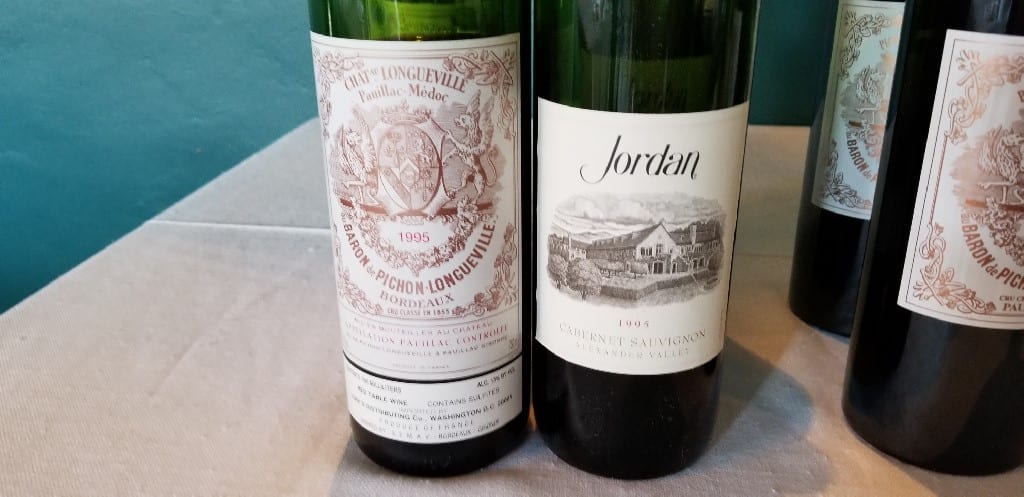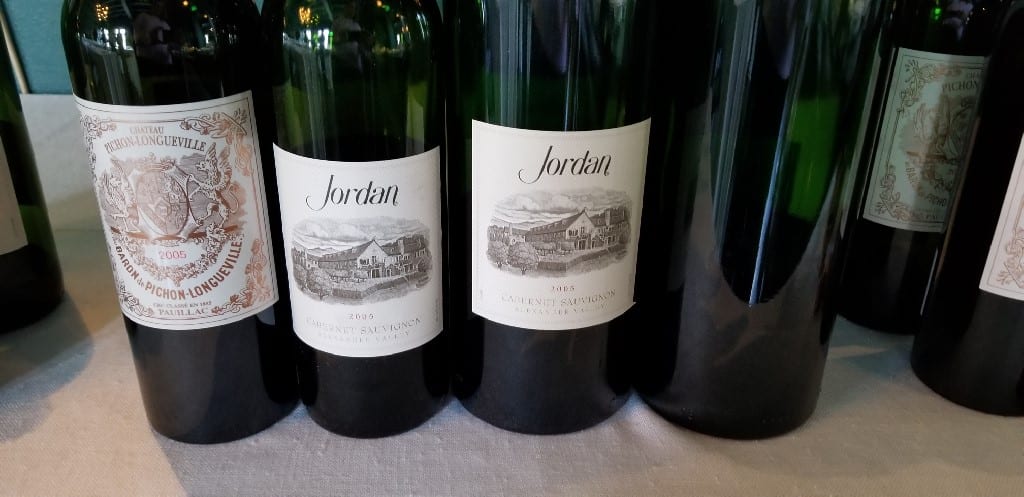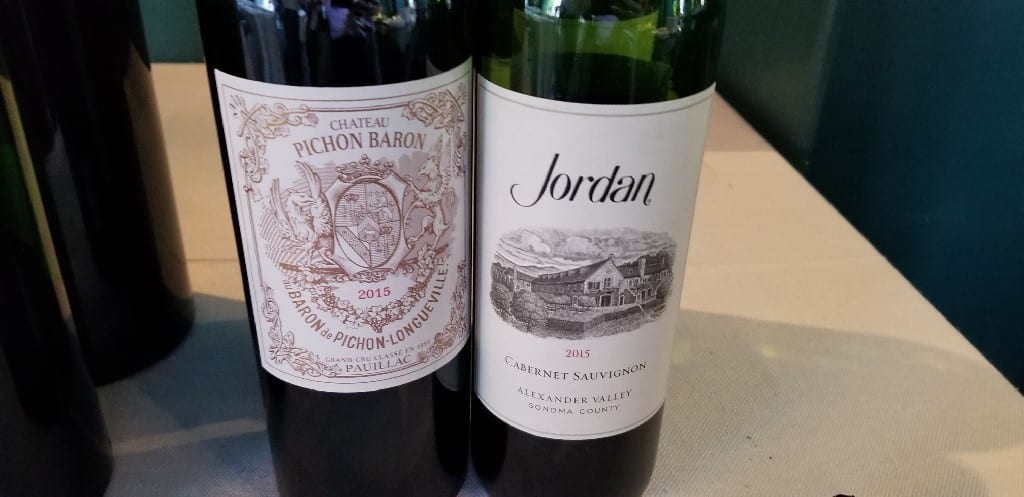
21 May Jordan Winery Releases the 2015 Cabernet Sauvignon
The release of the 2015 Jordan Cabernet Sauvignon was not just another wine release. This release marks a shift in the winemaking that has been a dream of the winemaking team for years. And to announce this change and release the 2015 vintage, associate winemaker Maggie Kruse came to Los Angeles for a comparative tasting of Jordan wines and Chateau Pichon-Baron wines from three vintages, which I wrote about in the Napa Valley Register and share here.
The 2015 Jordan Winery Cabernet Sauvignon was released on May 1. Releasing a new vintage each year will always excite customers. But the release of the 2015 Jordan Cabernet Sauvignon was more than just the release of the new vintage. The release of the 2015 Jordan Cabernet Sauvignon has been a dream of the winemaking team for 15 years and it has finally come to life.
Established in 1972, Jordan Winery was inspired by Bordeaux. Founders Tom and Sally Jordan were Francophiles and were inspired to create a Bordeaux-style Cabernet Sauvignon in California. Located in Sonoma’s Alexander Valley, the Jordan chateau sits on 1,200 acres of rolling hills and as you drive up the long driveway, both the landscape and the architecture will make you think for a moment that you are in Bordeaux.
While Jordan Winery is not in Bordeaux, they use Bordeaux as a model. They aim to make balanced wines with bright acidity and low alcohol. To demonstrate the synergy, as well as to introduce the 2015, Jordan hosted a comparison tasting of three decades of Jordan Winery Cabernet Sauvignon and Pichon-Baron from Bordeaux.
1995 vintage
We began the tasting with the 1995 Jordan Cabernet Sauvignon and the 1995 Pichon Baron. With almost 25 years of age on them, both wines showed beautifully. The 1995 Jordan Cabernet Sauvignon, a blend of 86 percent Cabernet Sauvignon and 12 percent Merlot, was made in two-thirds French oak and one-third American oak. It showed notes of black cherry and cassis with a hint of cedar. Similarly, the 1995 Pichon Baron had notes of black fruit and cassis with spice character. While the Jordan Cabernet still maintained a bit more structure, the two wines still showed fruit character after all this time.
2005 vintage
The 2005 vintage marks the year that second-generation vintner John Jordan took over from his parents. He brought a new energy to the winery and along with winemaker Rob Davis, who has crafted every vintage of Jordan since 1976, they looked to see what they could do better. Instead of focusing exclusively on estate fruit, they began playing with fruit sourced from the Alexander Valley.
The 2005 Jordan, a blend of 76 percent Cabernet Sauvignon, 19 percent Merlot and 5 percent Petit Verdot, the wine was aged in two-thirds French oak and one-third American oak. The wine has concentrated aromas of currant, dried cherry and blackberry with an herbaceous note. In comparison, the 2005 Jordan in magnum has more mountain fruits and bell pepper notes and the tannins are more integrated. The 2005 Jordan is bolder with a richer, more acidic palate than the 2005 Pichon Baron, a gorgeous wine with cassis and brown spice notes and bright sandy tannins that settle on the mid-palate.
In addition to the 2005 Jordan Cabernet Sauvignon, the 2005 Jordan Super Blend was a bit more of an experiment. The wine was made in 100 percent French oak and fruit was sourced from local vineyards. The result is a wine that more closely reflected the 2005 Pichon Baron. The herbaceous notes are gone, and the wine has more grippy, drying tannins and a sweetness comes through from the oak. Even with almost 15 years of age, the wine is still rather tight with time to age.
2015 vintage
In 2006, Maggie Kruse joined Jordan Winery, becoming associate winemaker in 2009. On an oak buying trip in 2010, Maggie and Rob Davis went to a forest in France to look at trees. They had lunch with the man who would be cutting down their tree that day. He climbed up the tree with a chainsaw around his waist to take off branches. Maggie described the intense emotion of watching a 200-year-old oak tree come down and then smelling the freshly felled tree. She and Rob knew that this is what they needed in their wine.
The idea of shifting to 100 percent French oak would be a departure from Jordan’s typical style, which included American oak. It would be a big decision, as well as a costly one, to shift and over the next years, Maggie and Rob tried different combinations. In 2014, they put together a tasting with various percentages of French and American oak for John Jordan to taste. The American oak was overpowering in the evaluations and after tasting a two-thirds/one-third combination, a three quarters/one quarter combination and a 100 percent French oak option, the final choice was 100 percent French oak.
The 2015 Jordan Cabernet Sauvignon, released on May 1, was made from 100 percent French oak, of which 40 percent is new oak. The 2015 Jordan is elegant with aromas of red plum, black cherries, cranberries, pomegranate and a hint of graphite. The wine has a silky texture and delicate tannins. Of all the Jordan wines we tasted, the 2015 was the most similar to the 2015 Pichon Baron, which has sweet notes of red plum, cassis and tobacco with grippy tannins.
The release of the 2015 Cabernet Sauvignon sets a new path for Jordan Winery as from this point forward, the intention is for Jordan Cabernet Sauvignon to be made exclusively with French oak.
Read the original story in the Napa Valley Register.
Discover more from Please The Palate
Subscribe to get the latest posts sent to your email.








